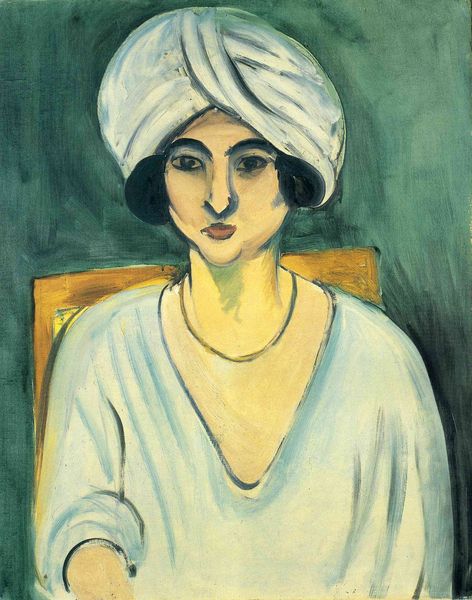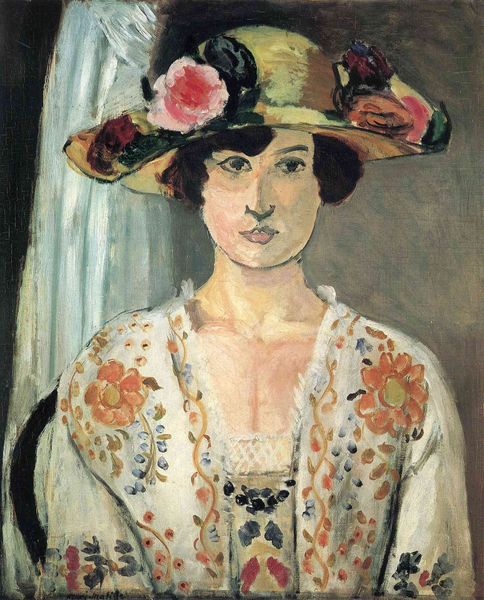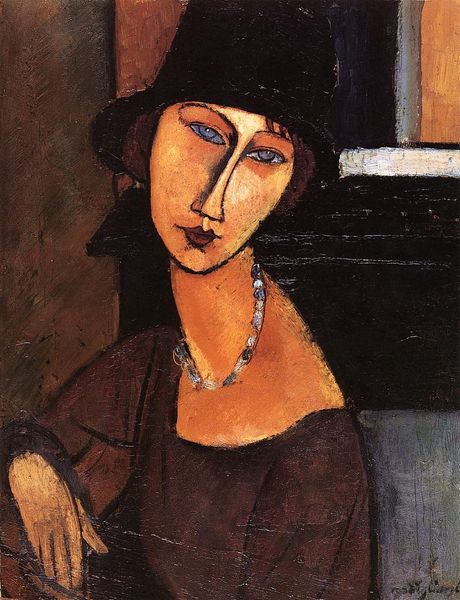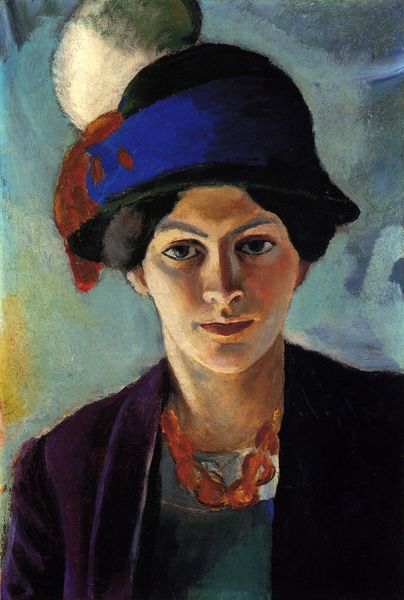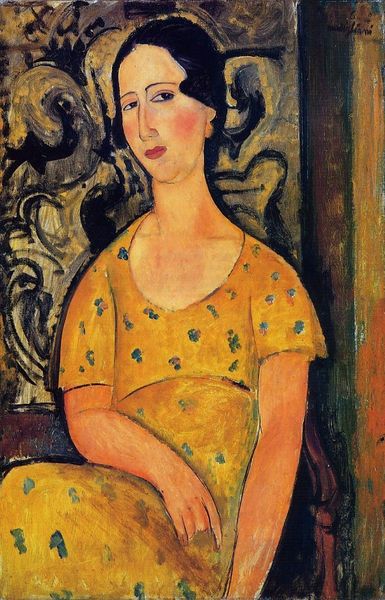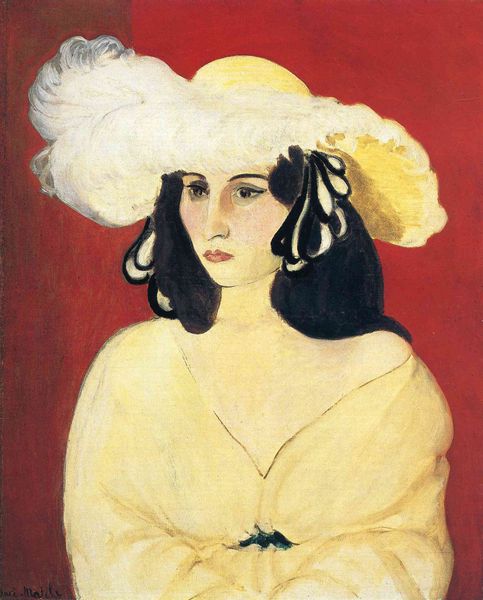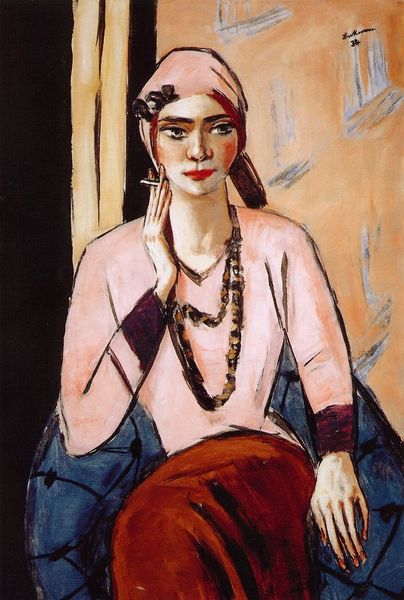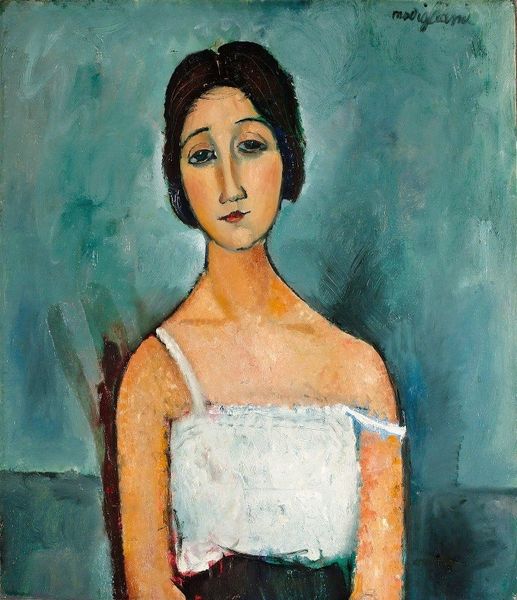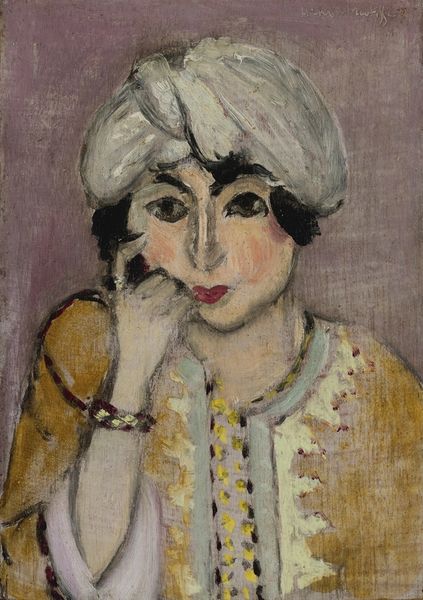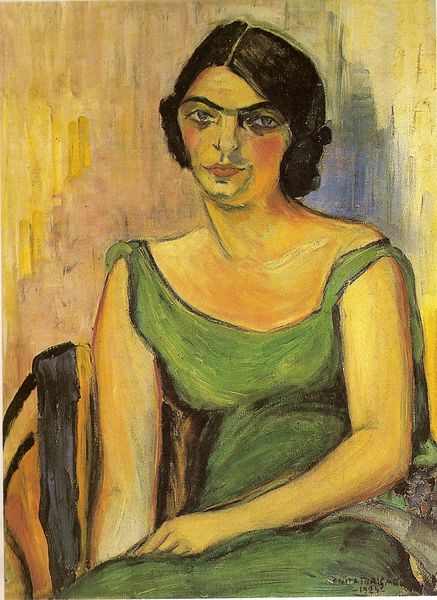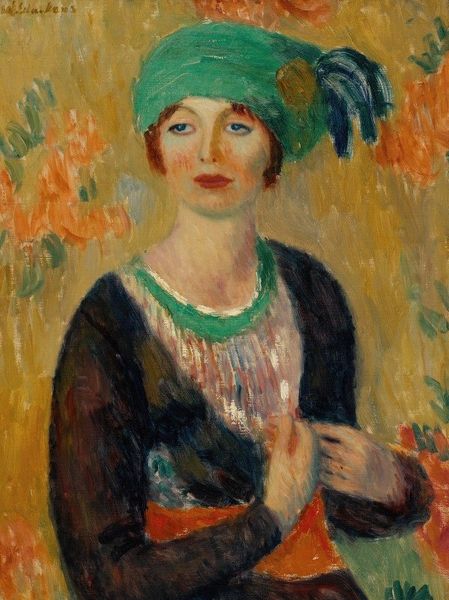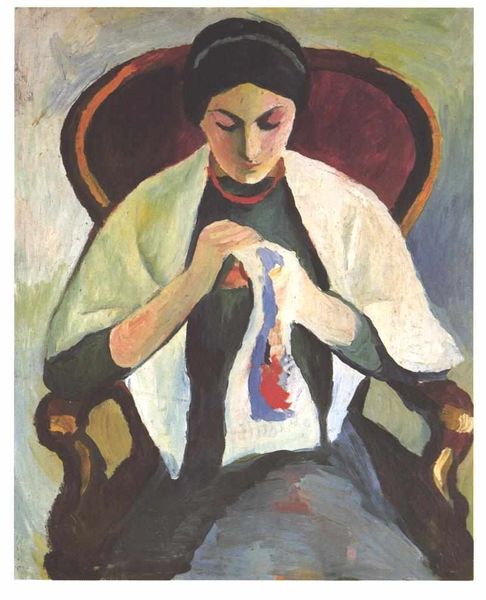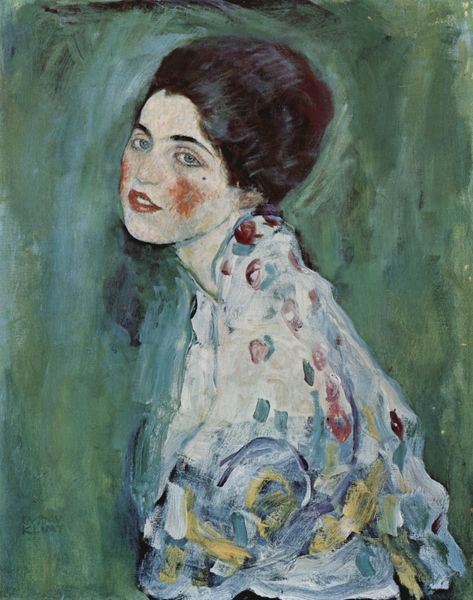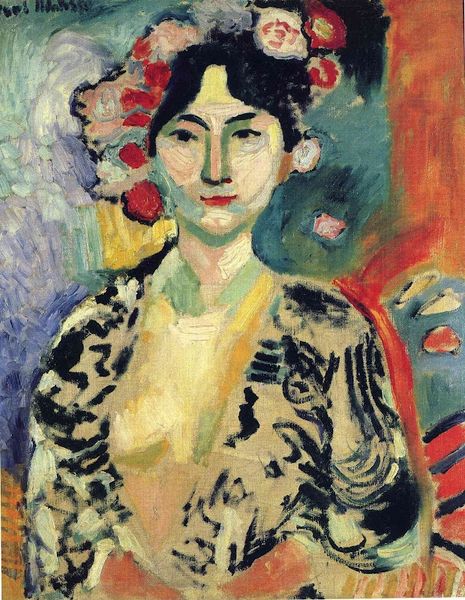
Copyright: Public domain US
Editor: Here we have Henri Matisse's "Lorette with Turban and Yellow Vest" from 1917, an oil painting that feels immediately striking because of its vivid color choices, doesn’t it? What catches your eye, or how do you interpret this work from a formalist perspective? Curator: I’m drawn to the interplay of flattened planes and the simplified forms, particularly the subject’s face. Notice how the planes of her face are rendered with delicate modulations of color. It doesn’t attempt to create a realistic three-dimensionality, but rather emphasizes the painting’s surface and its own construction. Editor: So you see it as more about the technique and color rather than a portrait of someone? Curator: Precisely. It isn’t about conveying Lorette’s inner world or psychological state, but about exploring pictorial space, chromatic relationships, and the very act of painting. Note the rhythmic application of paint, particularly in the contrasting hues of yellow, black and red: this is not accidental but a crucial device. Editor: That’s interesting, because when I first looked at it, I focused more on the clothing and how they seem to be flattened against the canvas. Now, I can better appreciate that. Thank you for the illuminating interpretation! Curator: And I appreciate you noticing. Perhaps you might further consider what happens when Fauvism embraced more formal considerations: what changed, and what remained of it? Editor: Definitely some food for thought. This was truly very interesting and made me see it with different eyes.
Comments
No comments
Be the first to comment and join the conversation on the ultimate creative platform.
